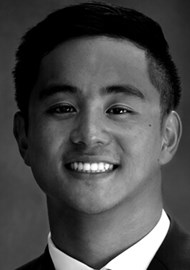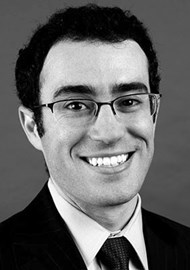What’s the best way to run a video job interview? Matthew Wu and Elliott Kozin provide some top tips – both for interviewer and interviewee.
The ongoing COVID-19 pandemic has changed almost every aspect of society. For the foreseeable future, most job interviews, including those in healthcare, will be held virtually. Without in-person interviews, employers may face new challenges identifying and hiring qualified job applicants. Similarly, job applicants may experience hurdles when selecting ideal positions and work environments. As employers and job applicants enter a new era of virtual interviews, this article provides some guidance on the process.
Scheduling interviews
The interview process starts the moment the employer and applicant begin communicating. Employers should be conscious of time differences, especially for international applicants. Employers should make efforts to schedule interviews during the normal business hours of the job applicant, if desired. They should also be aware that there are multiple videoconferencing software platforms available and ensure that the software is easily accessible via both Mac and PC. In addition, employers should consider offering a telephone back-up option in the event there are computer issues. Employers should advise the applicant on the software that is to be used well in advance of the interview so that it can be downloaded and tested. The employer should choose videoconference software that provides standard privacy protections. A videoconferencing session password may prevent unwanted individuals entering the interview session.
“Both parties should be aware that certain behaviours and mannerisms on video calls are exaggerated, such as chair swivelling or face touching”
Pre-interview preparation
Employers and applicants should check video and audio equipment prior to the interview. Consider choosing a place with a strong internet connection. Keep a telephone nearby to call into the interview in the case of computer or internet issues. The employer and applicant should also select a location that is quiet and does not have the potential for background noise or distractions. There should be ample light without creating glare, which can be achieved through an external light source (e.g. a ring light). Keep in mind that anything behind a camera may be seen. Avoid interviewing in a space that has an overly busy backdrop. Some employers and applicants may consider a virtual neutral background that will provide for minimal distractions.
The computer desktop of the employer and applicant should have an organised appearance as there may be the need to share screens. Consider removing non-essential files and closing programs unrelated to the interview. Many operating systems have the option to turn off notifications, such as text messages. This may be helpful to avoid any unwanted notices during a shared-screen session.
“The computer desktop of the employer and applicant should have an organised appearance as there may be the need to share screens”
Interview day
For the interview day, employers and applicants should wear professional clothing. Video cameras should be physically positioned above eye level to ensure good eye contact. Multitasking, such as checking email, should be avoided because diverted attention is easily perceived by the other party. For both parties, knowing when to speak during videoconferencing can be challenging as internet lag on both ends cannot be predicted precisely, so be mindful of possible delays of communication. After finishing longer answers to questions, nodding or muting after responding eliminates some guesswork as to when the other party is to speak next and prevents uncomfortable pauses.
When taking an extra moment to think through a response, consider notifying the other party instead of remaining silent since this appears similar to internet connection issues. Both parties should be aware that certain behaviours and mannerisms on video calls are exaggerated, such as chair swivelling or face touching. In the case of a joint interview with multiple applicants and/or employers, at the conclusion of the interview, all parties should be conscious of who remains in the virtual room - this will avoid unwanted disclosure of confidential information.
Employers should recognise that applicants during virtual interviews are not observing the actual work environment. Applicants are also not typically given the opportunity to interact in less formal settings with employees, which provide insights into the work culture. Employers should consider creating a video that can be sent to the applicant that may provide a tour or information beyond what is typically included on their organisation’s website. This can be sent ahead of time or played during the interview so that related real-time discussion is feasible.
“Employers should be cognisant that applicants may still have a limited understanding of the workplace after virtual interviews”
Post-interview discussion
Similar to standard in-person interviews, applicants may consider sending thank you notes and following up on any unanswered questions. Employers should be cognisant that applicants may still have a limited understanding of the workplace after virtual interviews. Consequently, employers may consider the opportunity for additional discussion about the position and environment.
Summary
Virtual interviews are the ‘new normal’. Employers and applicants should consider steps to streamline the interview process. Additional reading and tips on virtual interviews are increasingly available [1-3].
References
1. Borsellino R. 20 Video Interview Tips to Help You Dazzle the Hiring Manager and Get the Job. 2020
www.themuse.com/advice/
video-interview-tips
Last accessed November 2020.
2. Jones RE, Abdelfattah KR. Virtual Interviews in the Era of COVID-19: A Primer for Applicants. J Surg Educ 2020;77(4):733-4.
3. Weed J. How to Ace an Online Job Interview. The New York Times. 2020.
www.nytimes.com/2020/08/03/
business/online-job-interview-tips.html
Last accessed November 2020.





